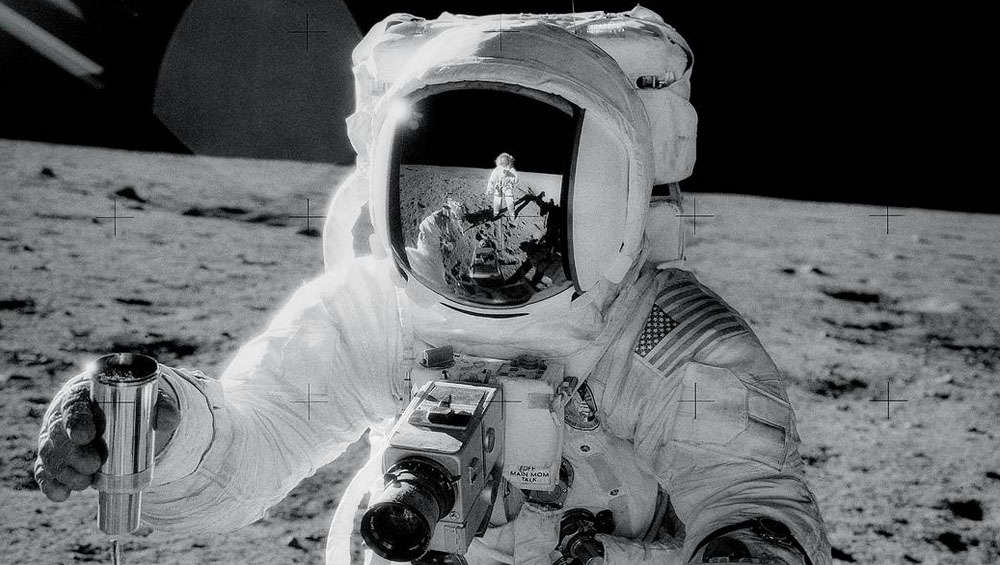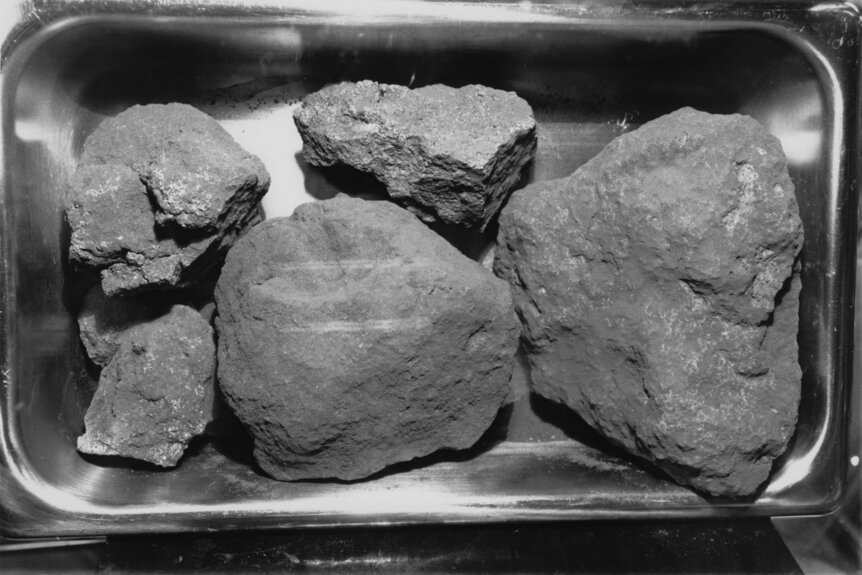Create a free profile to get unlimited access to exclusive videos, sweepstakes, and more!
What happened to the Moon’s innards billions of years ago is being revealed by Apollo rock samples

When Apollo astronauts brought back samples of lunar regolith to Earth, they probably couldn’t have imagined that there would still be secrets hiding in them decades later.
Moon dust is now revealing how our satellite evolved when it was still having volcanic outbursts. Those rock samples that touched down from the Apollo missions contain volcanic glass with sulfur isotopes that give away how our satellite’s iron core formed and how lunar lava oozed beneath the surface and exploded into space. Micro-globs of magma that came from deep inside the Moon ended up trapped in volcanic rock right before eruption. The isotopes of sulfur in these globs are telling us more about the Moon’s guts.
“Lunar volcanic glasses were generated by melting different compositional reservoirs within the interior of the Moon,” geologist Alberto Saal, who recently published a study in Science Advances, told SYFY WIRE. “The different sulfur isotopes of those reservoirs give clues about processes that were responsible for the generation of those different reservoirs within the Moon.”
Billions of years ago, volcanoes were throwing heated tantrums on the Moon, which explains the volcanic rock and glass found in lunar regolith samples. When a volcano vomits lava, the lava undergoes the process of degassing, which releases sulfur and other volatile elements (which evaporate easily). The micro-globs, or melt inclusions, found in fragments of olivine—also a common volcanic rock on Earth—were captured before degassing could occur. Any sulfur and other volatiles that could tell us more about the ancient composition of the Moon’s innards were also preserved with them.
Sulfur isotopes told Saal and his team what went on deep inside the Moon before there were humans around to study it, including phenomena like the crystallization of the Lunar Magma Ocean and the separation of the lunar core from everything else. Previous studies of these samples didn’t show many differences between ratios of sulfur isotopes, meaning that whatever was inside the Moon was thought to be pretty much the same when it was still young. Turns out its innards were not so homogenous. Degassing had gotten rid of sulfur isotopes that would have proven otherwise.
“The importance of the melt inclusions is that they are drops of melts trapped within crystals in the volcanic glasses,” Saal said. “Because of the entrapment they were protected from degassing of sulfur and therefore giving us a more pristine original Sulfur isotopic composition that the glass beads affected by degassing of sulfur during eruption on the surface of the Moon.”
Evidence of the separation of the Moon’s core was found in the ratio of sulfur-34, a heavier isotope of sulfur, to sulfur-32, a lighter isotope. Peering into the lunar past through melt inclusions that had stayed in their pre-degassing state revealed something else. The volatiles in these drops of lava (which eventually hardened into glass within the olivine) had not yet escaped pre-eruption. Iron cores that separate from the rest of the insides of a planet or moon tend to take sulfur with them. Magma with more sulfur-32 was the result of the iron core drifting away and taking the heavier sulfur-34 with it.
The variation seen in different samples of lava suggested they were from different parts of the Moon, which had the researchers rethinking the heterogeneity of the pockmarked gray rock that orbits us. Many sulfur isotopes that supported lunar core segregation and lava crystallization that showed up. Saal believes that the best way to further investigate how the Moon evolved, and to get an idea of its complete composition, is for at least one of the upcoming crewed Artemis missions to bring back new vials of dust from areas that have never been sampled before.
“Sulfur measurements support what we know about the evolution of the Moon,” he said. “The full composition of the different compositional groups of lunar volcanic glasses indicate that they came from different reservoirs within the Moon. Sulfur isotopes confirm this too. Understanding the evolution of sulfur isotopes will bring light into the evolution of the Moon itself.”
Even if the first woman and next man on the Moon land later than 2024, what they bring back to Earth could make us see the Moon in a light we have never seen it in before.



























